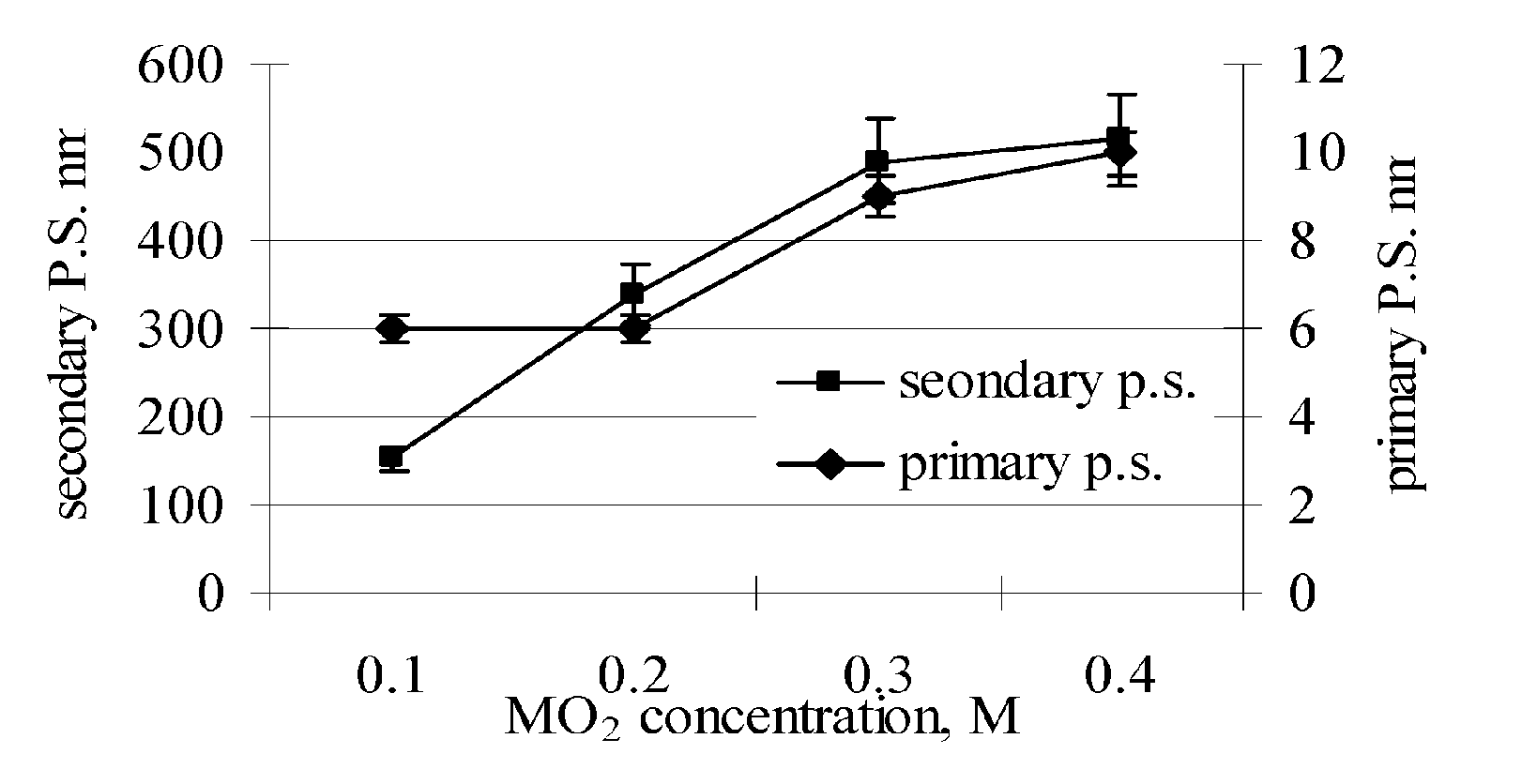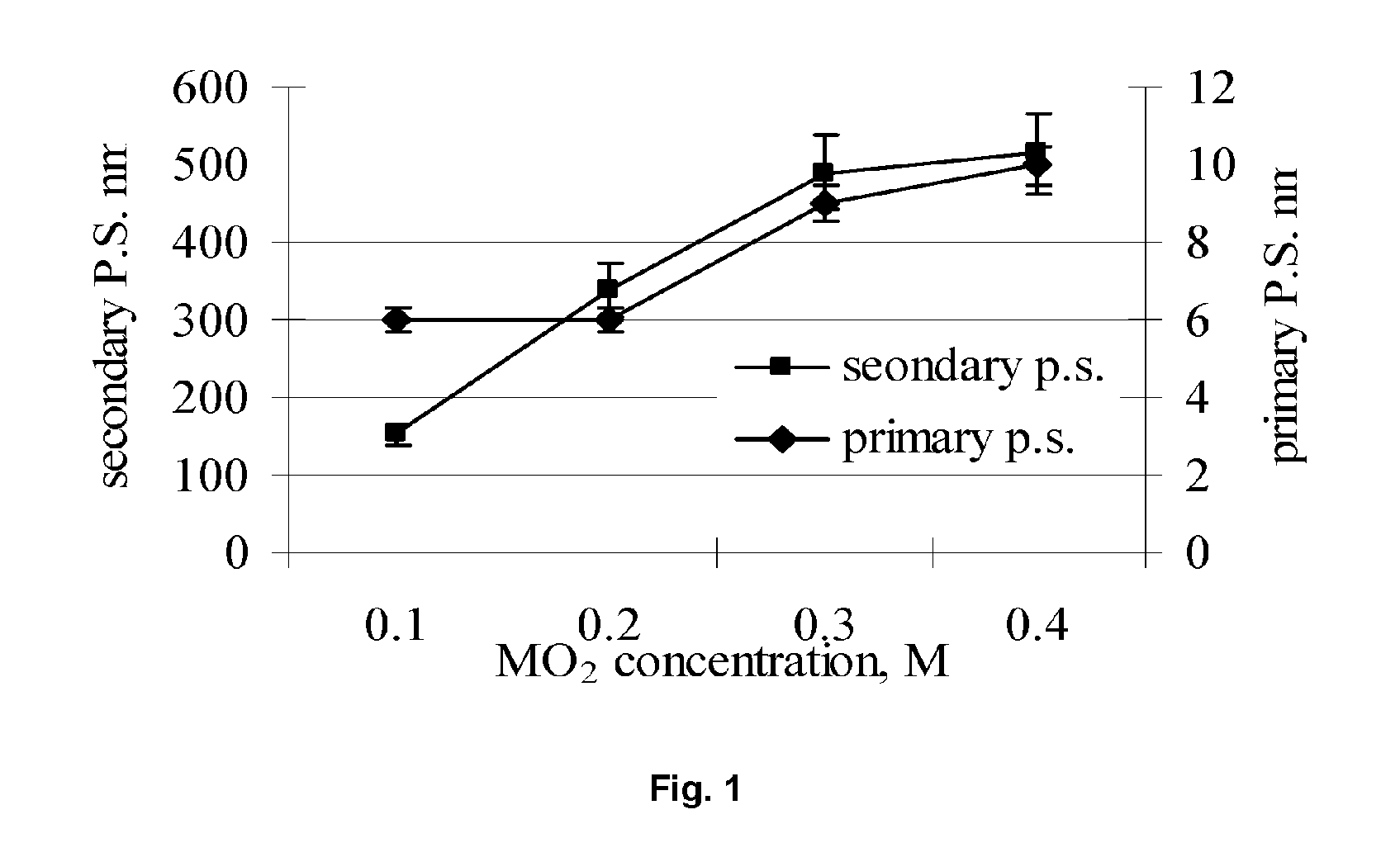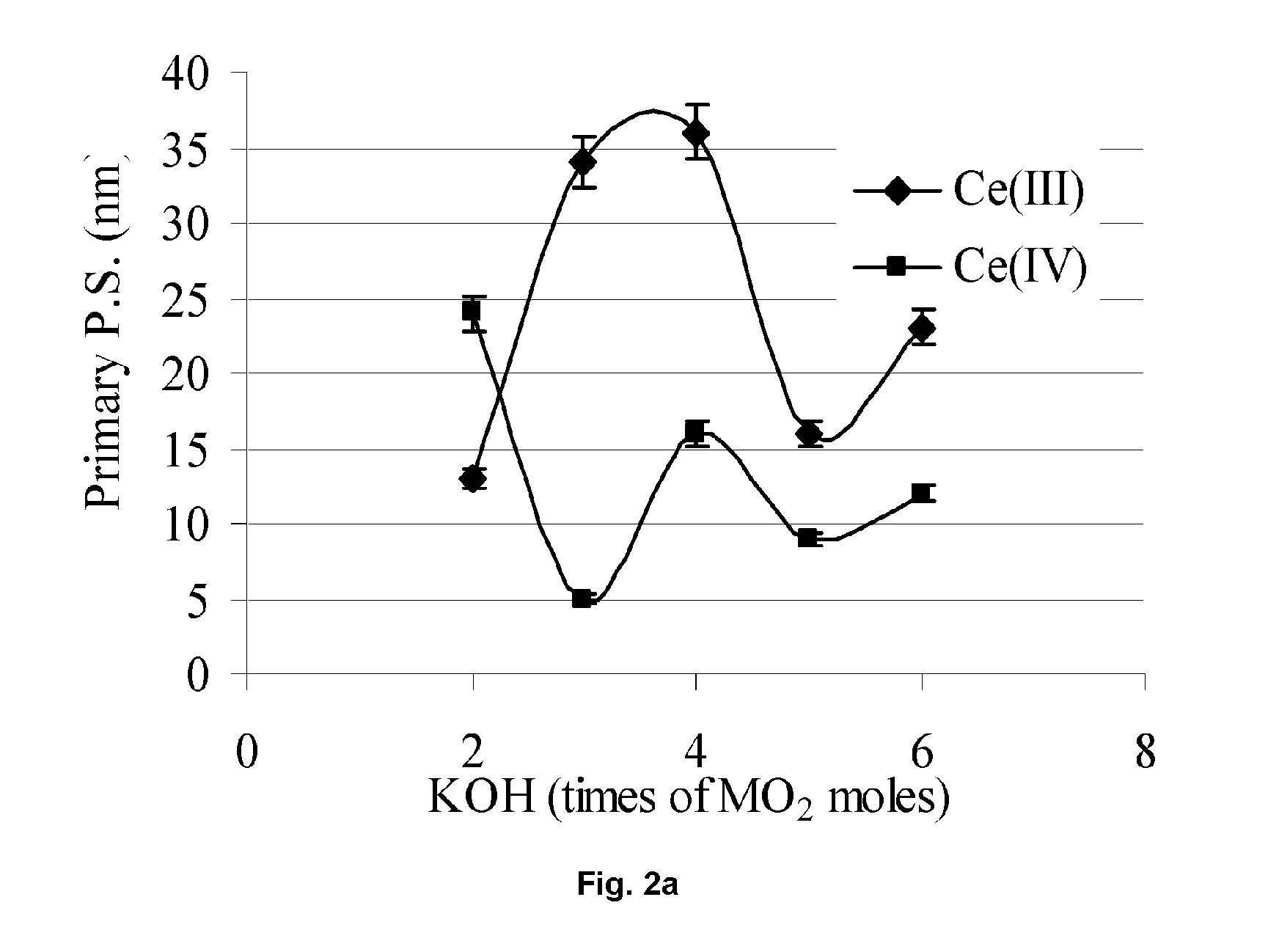Methods of controlling the properties of abrasive particles for use in chemical-mechanical polishing slurries
a technology of chemical-mechanical polishing and abrasive particles, which is applied in the direction of lanthanide oxides/hydroxides, chemistry apparatus and processes, etc., can solve the problems of difficult to avoid the introduction of contaminants, difficult to obtain a narrow distribution of appropriately sized abrasive particles, and high energy consumption, so as to improve the polishing of sti structures and reduce defects
- Summary
- Abstract
- Description
- Claims
- Application Information
AI Technical Summary
Benefits of technology
Problems solved by technology
Method used
Image
Examples
example 1
[0080] In a 1000 ml plastic bottle, 41.6 grams of (NH4)2Ce(NO3)6 (ammonium cerium (IV) nitrate) was dissolved in 500 ml deionized H2O (DI-water) and 1.2 grams CH3COCH2OCCH3 (acetyl acetone) to form a solution. 2.4 grams of Ti[OCH(CH3)2)]4 (titanium (IV) isopropoxide) was added to the solution followed by the addition of 36 grams of C2H5NH2 (ethylamine) with stirring. A sufficient quantity of DI-water was then added to reach a final volume of 800 ml. The solution was stirred for 5 minutes and then transferred to a clean 1000 ml stainless steel vessel. The stainless steel vessel was closed and sealed, shaken for 5 minutes, and then placed into a furnace and heated at 300° C. for 6.0 hours. The stainless steel vessel was then removed from the furnace and allowed to cool to room temperature. The reaction product formed in the vessel was transferred to a clean 1000 ml plastic bottle. As shown in FIG. 1, the reaction product consisted of a dispersion of CeO2 (cerium oxide) particles havin...
example 3
[0082] A dispersion of cerium oxide particles was formed using the same materials and procedures as set forth in Example 1, except that no acetyl acetone (CH3COCH2OCCH3) was used. The cerium oxide particles thus formed had a narrow size distribution (D50=80 nm; D90 =97 nm; and D10=60 nm) similar to the cerium oxide particles formed in Example 1, but the average crystallite size was only 90 Å.
example 4
[0083] Four chemical-mechanical polishing slurries were formed using cerium oxide particles. Slurry A consisted of 100 parts by weight of the cerium oxide nanoparticle dispersion formed in Example 1. Slurry B was identical to Slurry A, except that the cerium oxide nanoparticle dispersion formed in Example 2 was used instead of the cerium oxide nanoparticle solution formed in Example 1. Slurry C was identical to Slurry A, except that the cerium oxide nanoparticle dispersion formed in Example 3 was used instead of the cerium oxide nanoparticle solution formed in Example 1. Slurry D was identical to Slurry A, except that the cerium oxide nanoparticle dispersion comprised conventional calcined cerium oxide (Ferro Electronic Material Systems SRS-616A) having an average particle size of D50=141 nm dispersed in water at a pH of 10.0. Identical TEOS SiO2 (silicon dioxide) wafers were polished using Slurries A, B, C, and D, respectively. The polishing was performed using a Strasbaugh 6EC pol...
PUM
| Property | Measurement | Unit |
|---|---|---|
| Temperature | aaaaa | aaaaa |
| Temperature | aaaaa | aaaaa |
| Size | aaaaa | aaaaa |
Abstract
Description
Claims
Application Information
 Login to View More
Login to View More - R&D
- Intellectual Property
- Life Sciences
- Materials
- Tech Scout
- Unparalleled Data Quality
- Higher Quality Content
- 60% Fewer Hallucinations
Browse by: Latest US Patents, China's latest patents, Technical Efficacy Thesaurus, Application Domain, Technology Topic, Popular Technical Reports.
© 2025 PatSnap. All rights reserved.Legal|Privacy policy|Modern Slavery Act Transparency Statement|Sitemap|About US| Contact US: help@patsnap.com



